Features and psychology
Not everyone decides to use black in design. Firstly, it is surrounded by an aura of mystery, enigma and magic. Secondly, the color is associated not only with fear, but also with drama, even tragedy.
However, if you put aside all prejudices, you can see the positive aspects of the shade: restraint, sophistication, variability, sexuality and businesslike. The perception of a black interior largely depends on additional shades: it makes other colors brighter and looks different against their background, largely adopting the properties of its companions.
Experts recommend not to overdo it with black in the interior – in large quantities it looks oppressive, puts pressure on the central nervous system. To avoid this, use it in moderation: in accents, to highlight shades and objects.
When planning a room design in black, keep in mind that it absorbs light like no other color: this means that any room will look much smaller (especially with improper lighting).
Variety of shades
Christian Lacroix wrote: “There are many shades of black: delicate black – veils, matte and sad black – crepe, intense royal black – velvet, … joyful and official black – lacquer.”
Although the designer spoke exclusively about fabrics, variations of black materials also exist in cabinet furniture: glossy facades, for example, look like patent leather, and matte ones resemble crepe or matting.
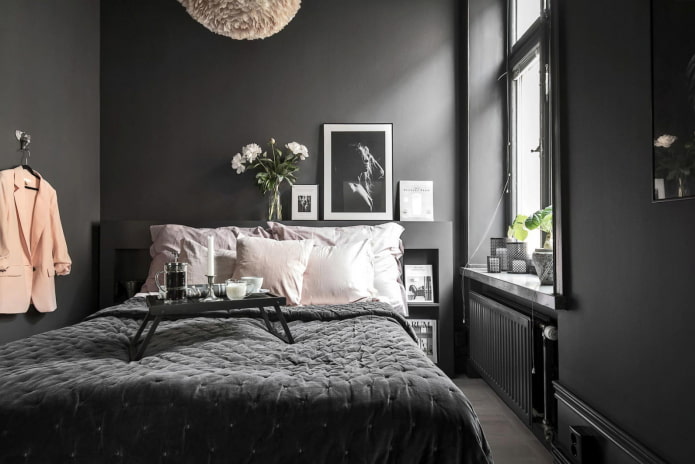
The photo shows a monochrome dark bedroom
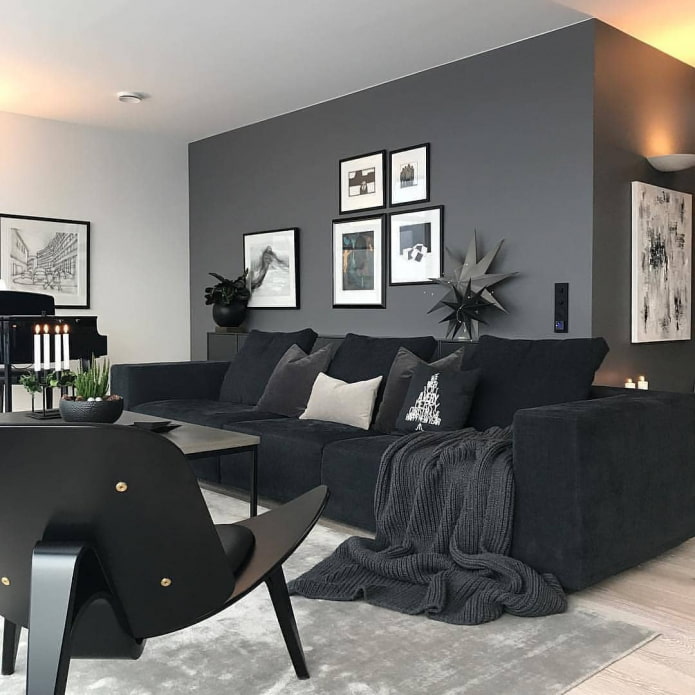
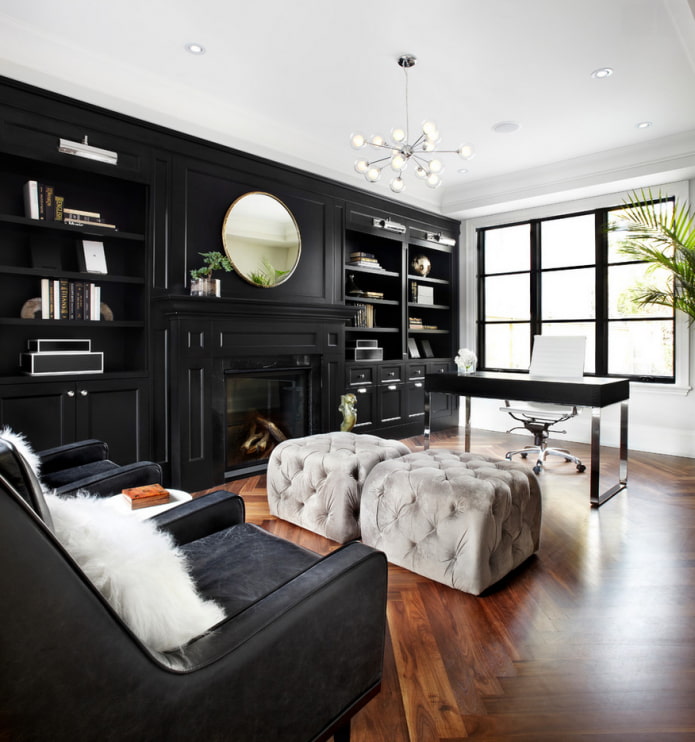
In addition to textures, there are also undertones: this is no longer a pure shade, but a mixed one: for example, blue-black with a certain glow gives a blue glare. Purple, brown, red, violet shades exist on the same principle.
A separate category is an admixture of white. The final tone depends on its amount: anthracite, coal, resin, soot, onyx. At first glance, it may seem that all black colors are the same, but a closer look shows the opposite.
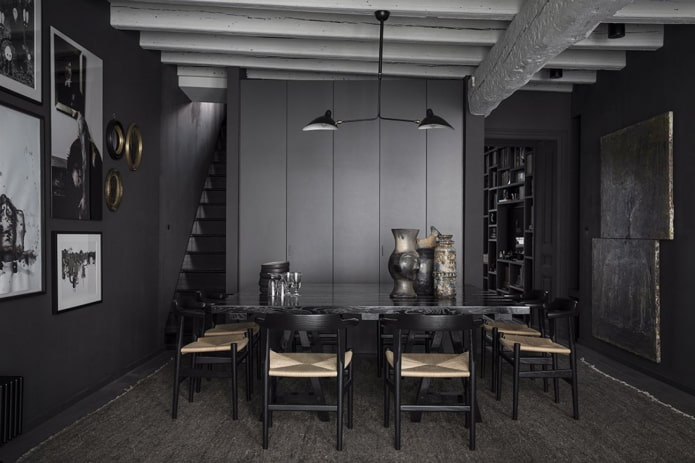
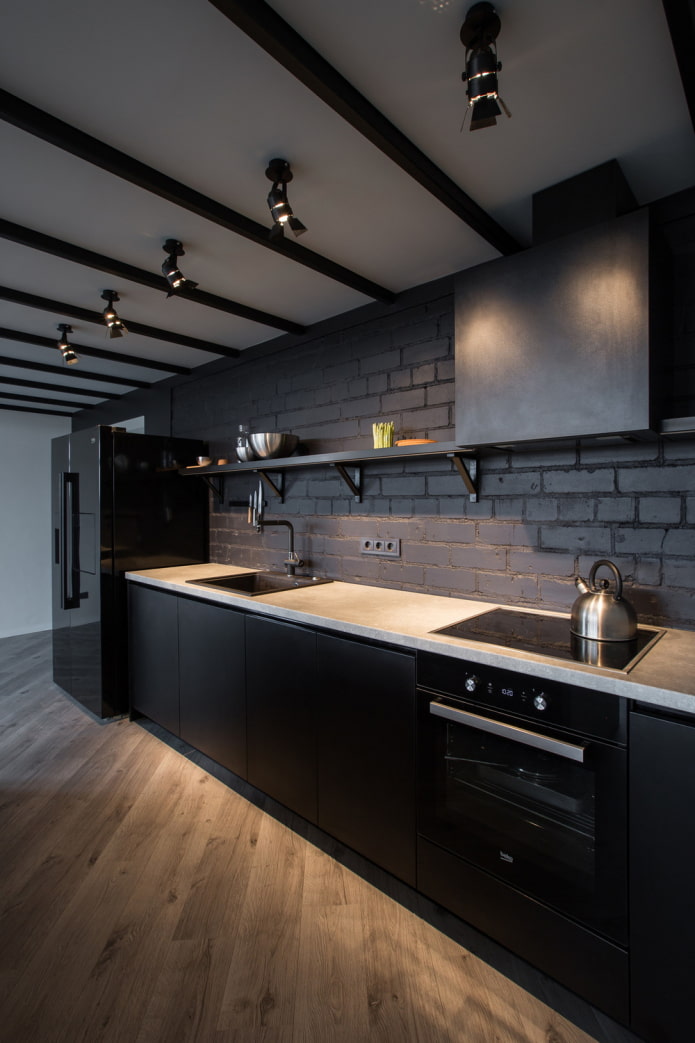
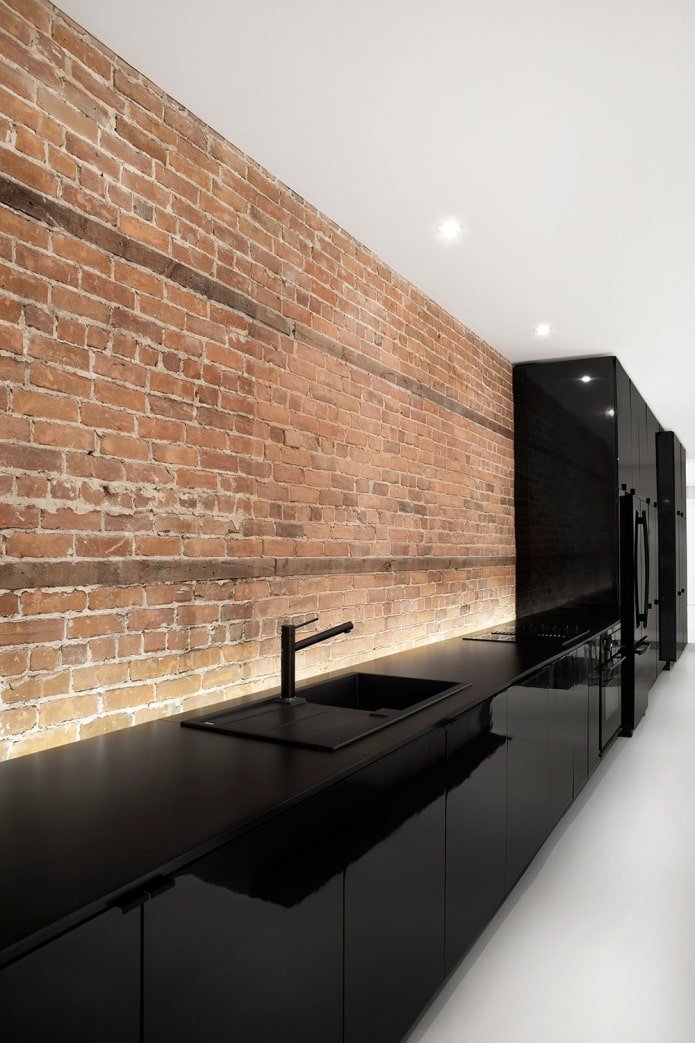
Finishing options
The use of black in the interior does not necessarily have to be limited to small details: it is great for walls, floors, furniture and even the ceiling.
Black walls
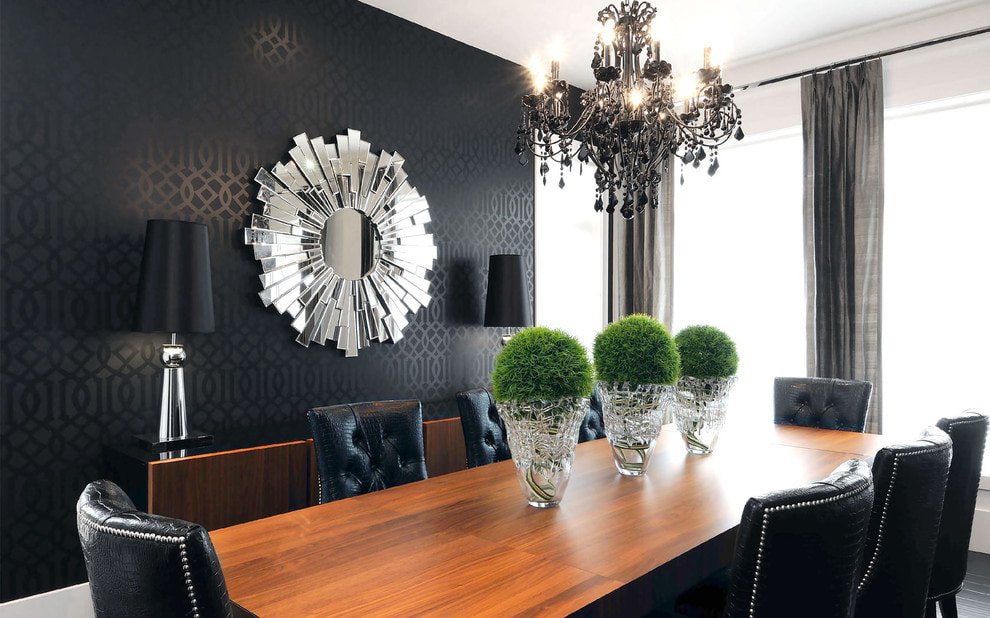
The graphite plane will definitely attract attention and become an accent. Several dark vertical surfaces can completely change the perception of space, correct the geometry of the room.
Features of black walls in the interior:
- Suitable for any style – from classic to snow-white Scandi.
- Require bright lighting – it is better to use in eastern or southern rooms.
- Make the space colder – you will need cozy decor.
- They are an excellent background for light furniture and bright accessories.
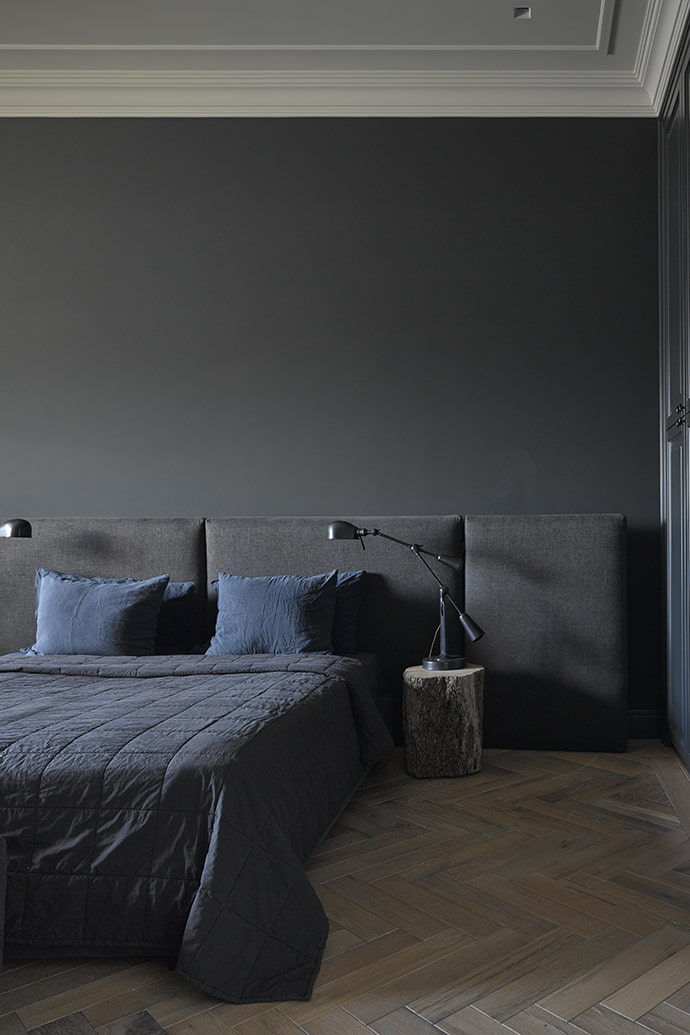
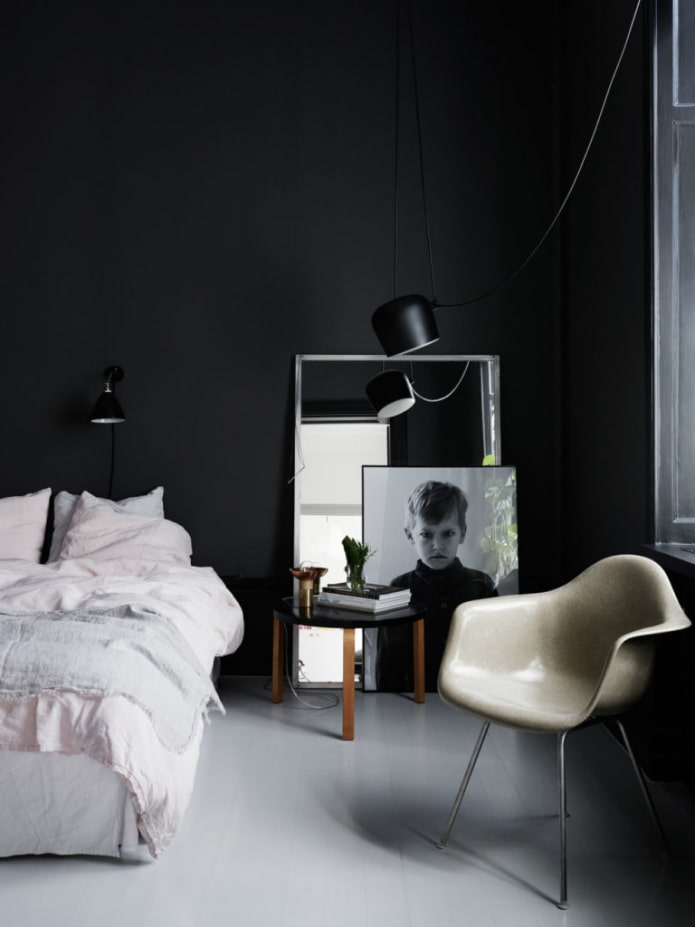
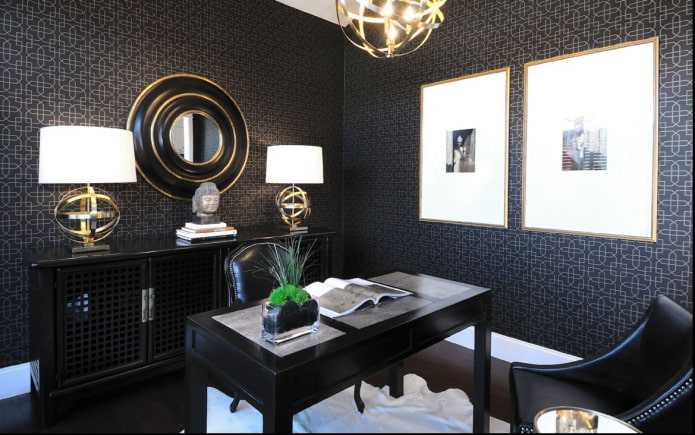
The photo shows wallpaper with gold trim in the study
Black ceiling
At first glance, it may seem that the resin color on the ceiling will visually “drop” it, make the room lower. In fact, the opposite is true: a single-color charcoal ceiling looks boundless and high.
If the pure black color in the interior above your head is intimidating, complement the ceiling with slats made of processed wood or plaster moldings. A bulky chandelier also distracts the eye from the ceiling paint.
Designers do not recommend making a charcoal ceiling in all rooms, it is usually used in the bathroom or bedroom, less often – in the living room, hallway.
Important! In apartments with ceilings below 260 cm, glossy stretch ceilings are installed: they reflect light and make the room appear higher.
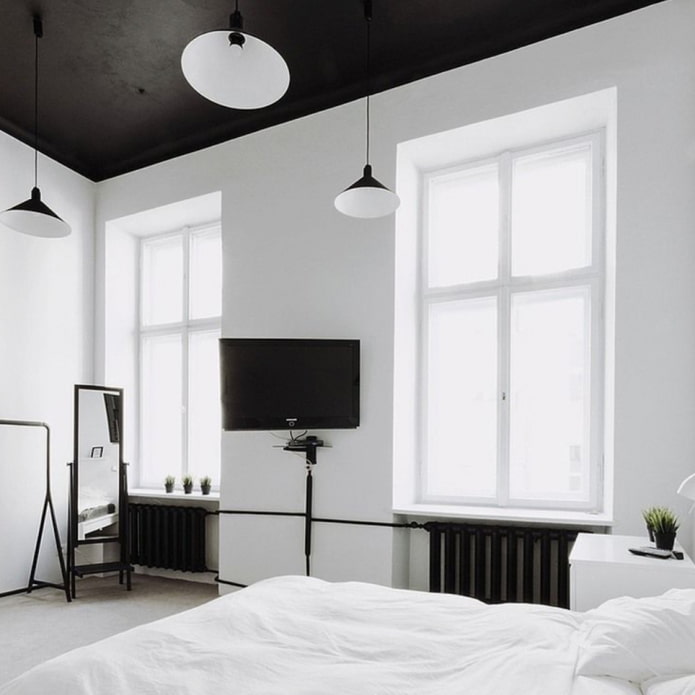
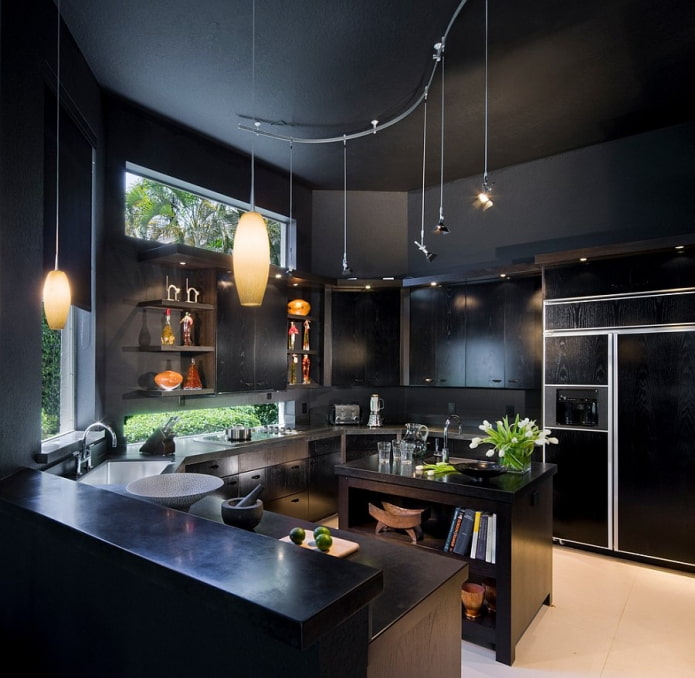
Black floor
Speaking from the practical side, the black color of the floor in the interior is the most difficult and capricious in maintenance. Any specks of dirt are visible on it, so constant washing is required. If you look through the eyes of a designer, such flooring is universal.
Firstly, it matches any interior. Secondly, it helps maintain harmony, because the floor should be darker than the walls and furniture. Therefore, if you have a robot vacuum cleaner or are ready to wash the floor every day, feel free to choose onyx for its design.

The photo shows rich dark parquet
How to use black furniture?
If a table is a more or less familiar detail, then a noble dark sideboard or console is something fresh. A stylish combination is obtained with white walls: monochrome is always appropriate and popular. For those who are not afraid of a gloomy effect, the total black option is suitable, when charcoal furniture is installed in the same room.
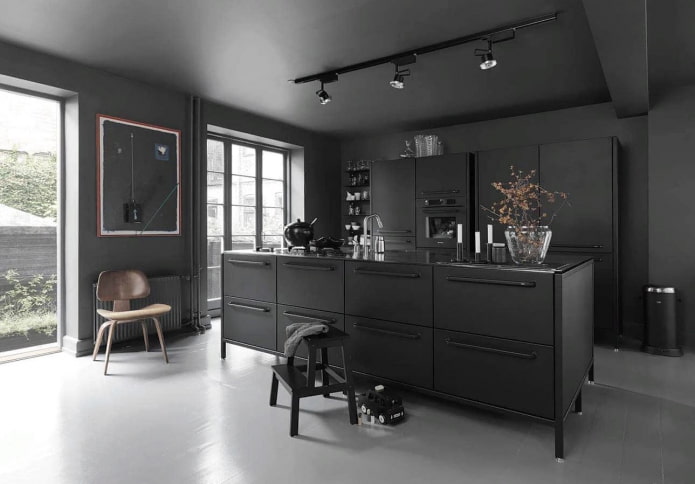
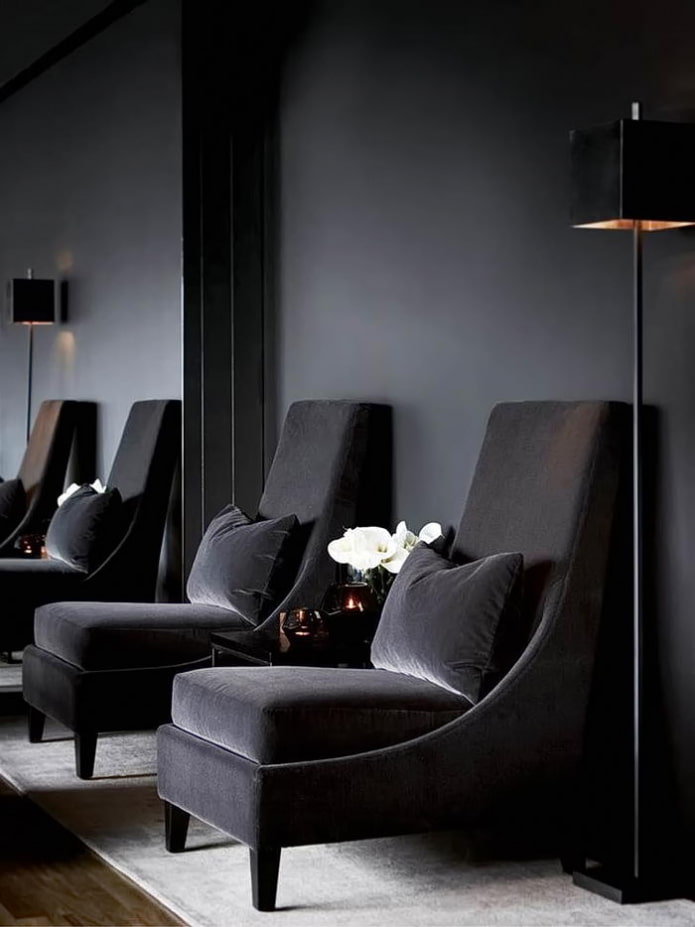
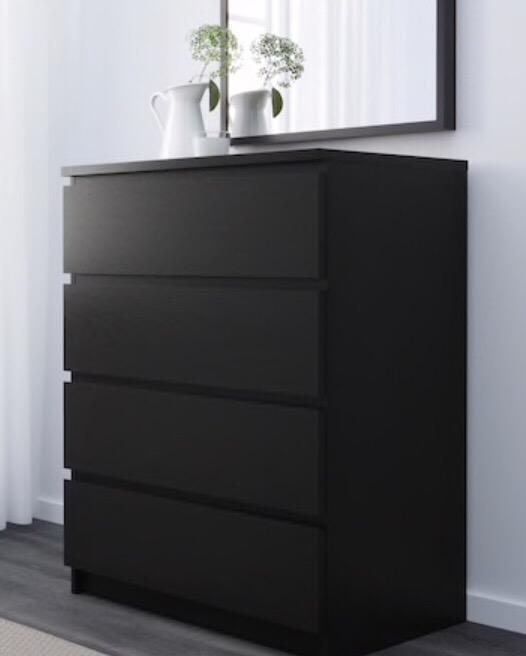
Black sofas look best in leather, but exquisite velvet will also make a lasting impression.
Important! Pile furniture fabrics of dark colors are a magnet for dust, pet hair and other dirt.
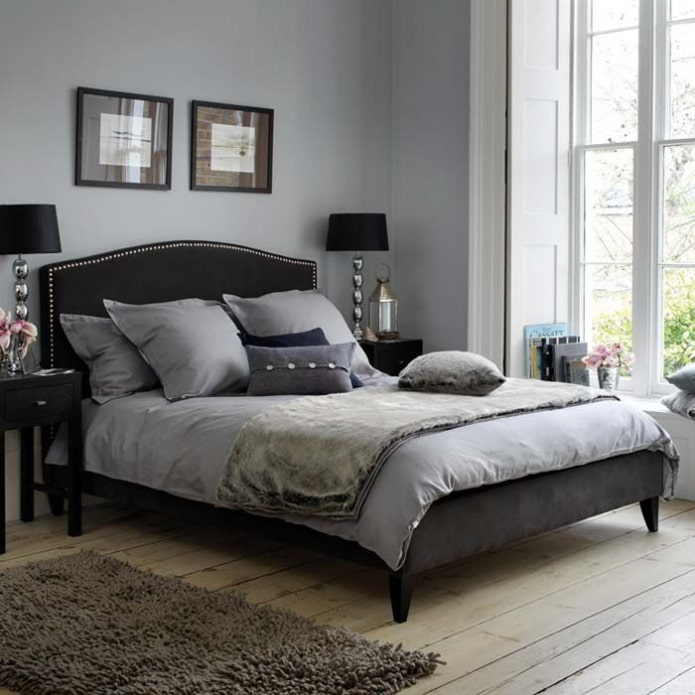
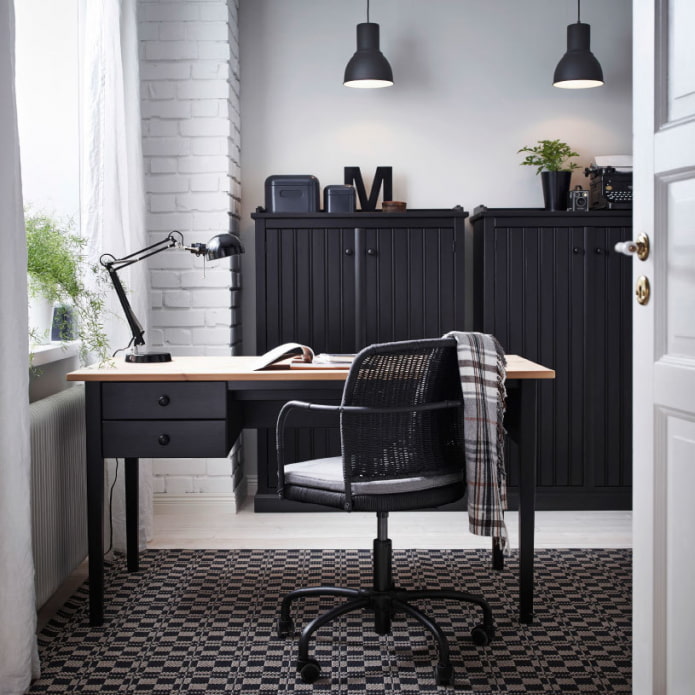
How does black decor, lighting and textiles look?
Is the predominance of black in the interior not for you? Use it in small accessories.
Textiles
Curtains absorb light well and you don’t have to match them to other details – the color matches any other. A velvet throw pillow and a warm fleece blanket will add sophistication to the upholstered furniture.
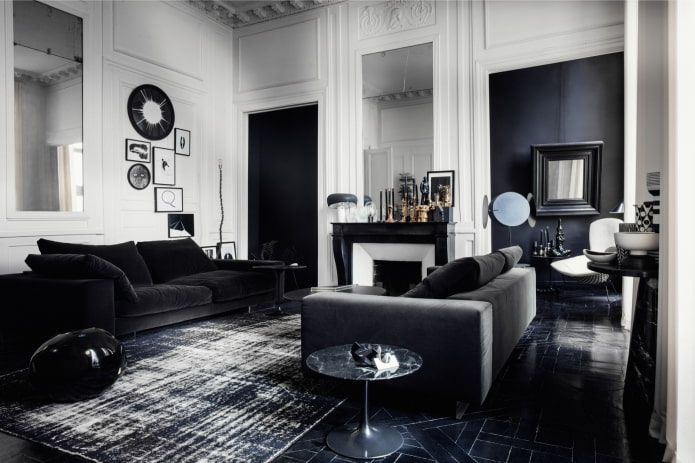
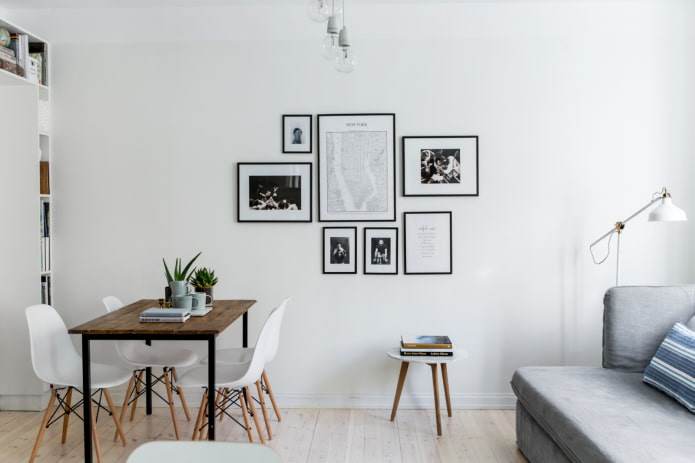
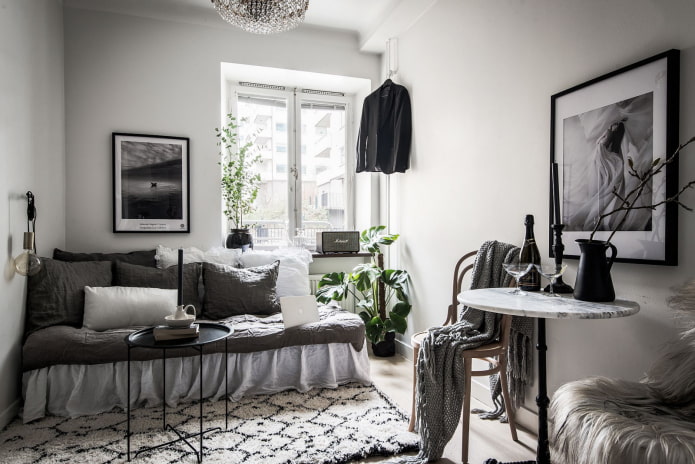
Lighting
The stores have a large selection of sconces, chandeliers, floor lamps, and table lamps with dark lampshades. Buy all the sources from one collection or choose one accent one – for example, a chandelier with a gold frame.
Pictures
The images themselves should not be dull and dark, it is more about the frames: contrasting baguettes unite even a diverse composition of works of art or posters.
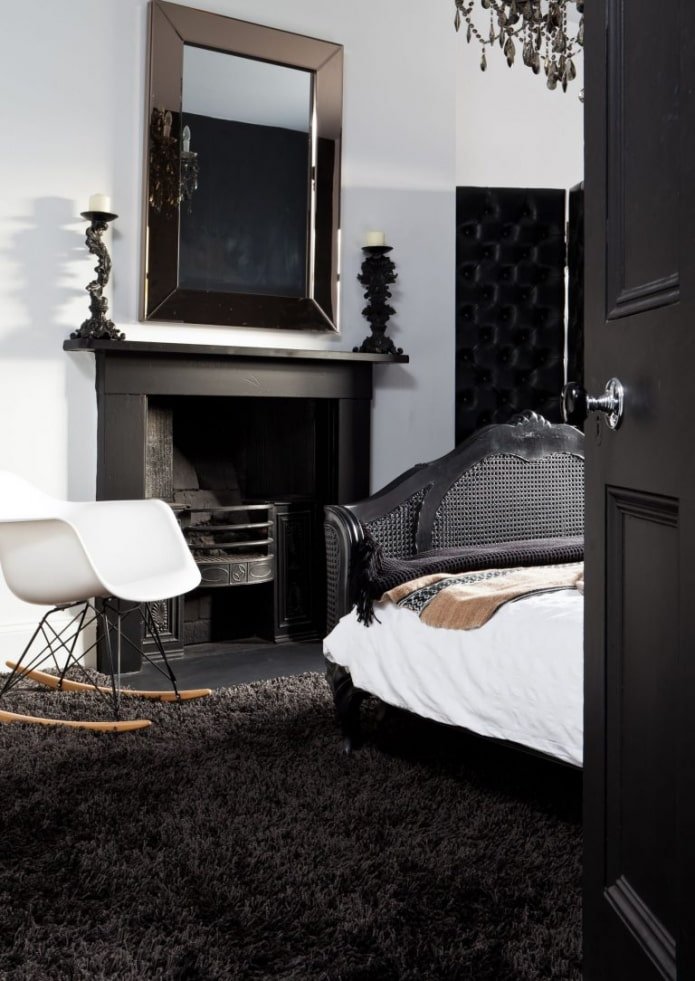
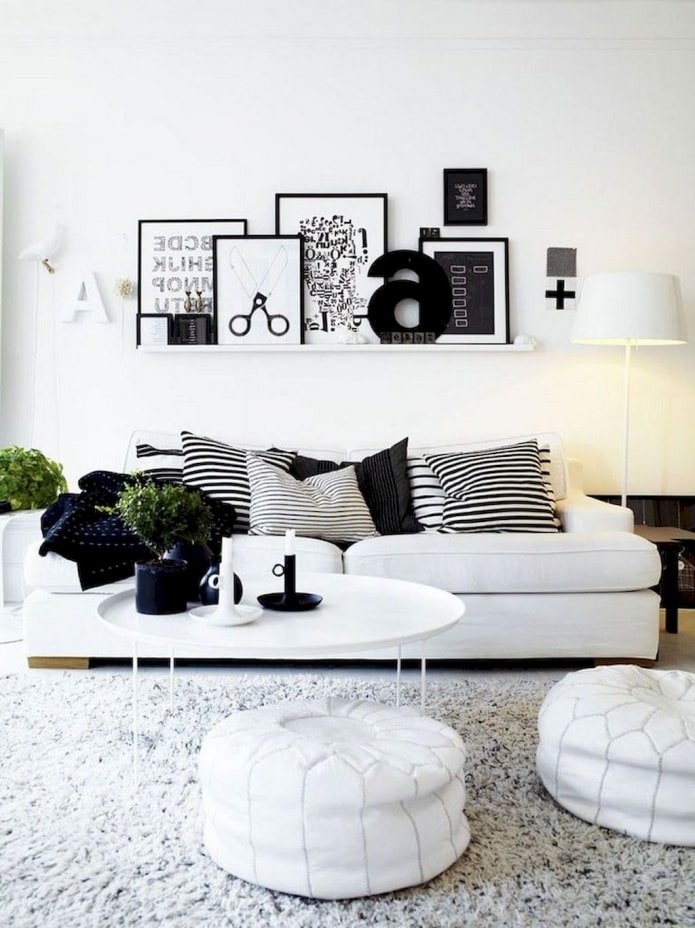
What colors go with black?
The possibilities of combining black in the interior are endless! Like white or gray, it goes with any shade, is basic. Let’s consider the most spectacular duets and trios.
- Yellow. A warm and bright sunny shade softens graphite, and itself looks brighter against its background.
- Pink. Don’t take fuchsia, give preference to dusty rose: a compromise of tenderness and brutality will give an ambiguous effect.
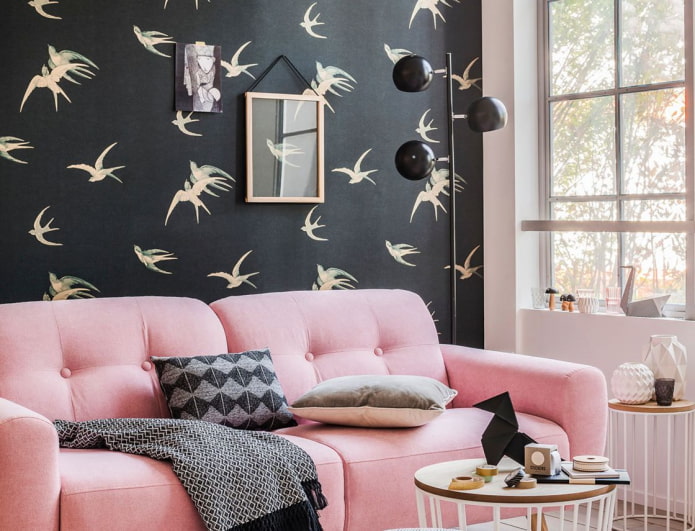
In the photo a combination with light pink
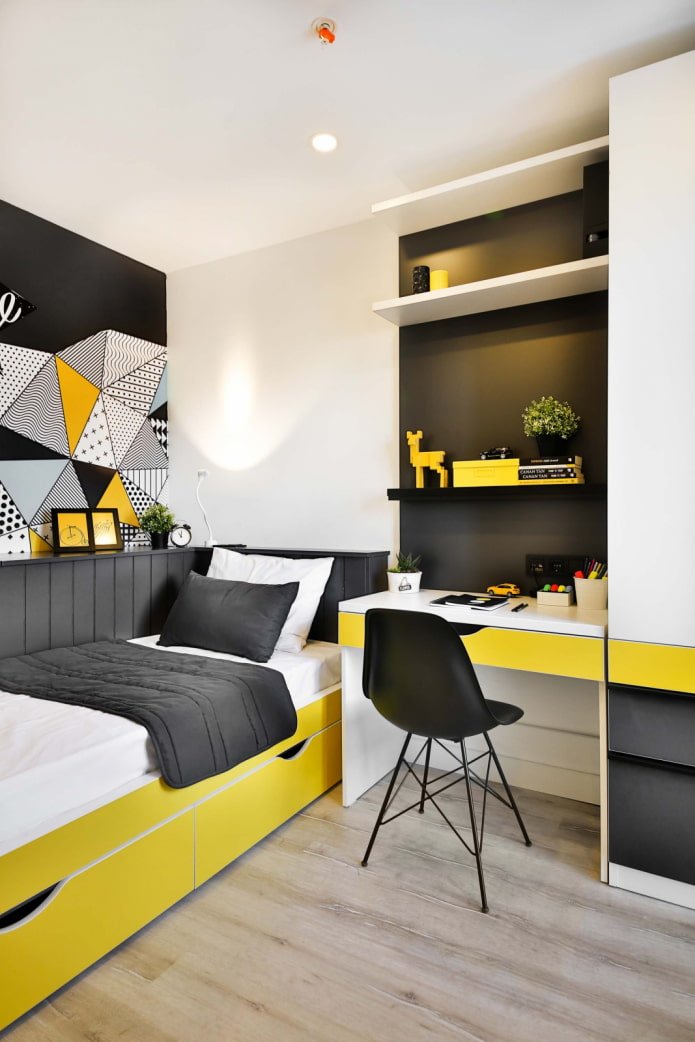
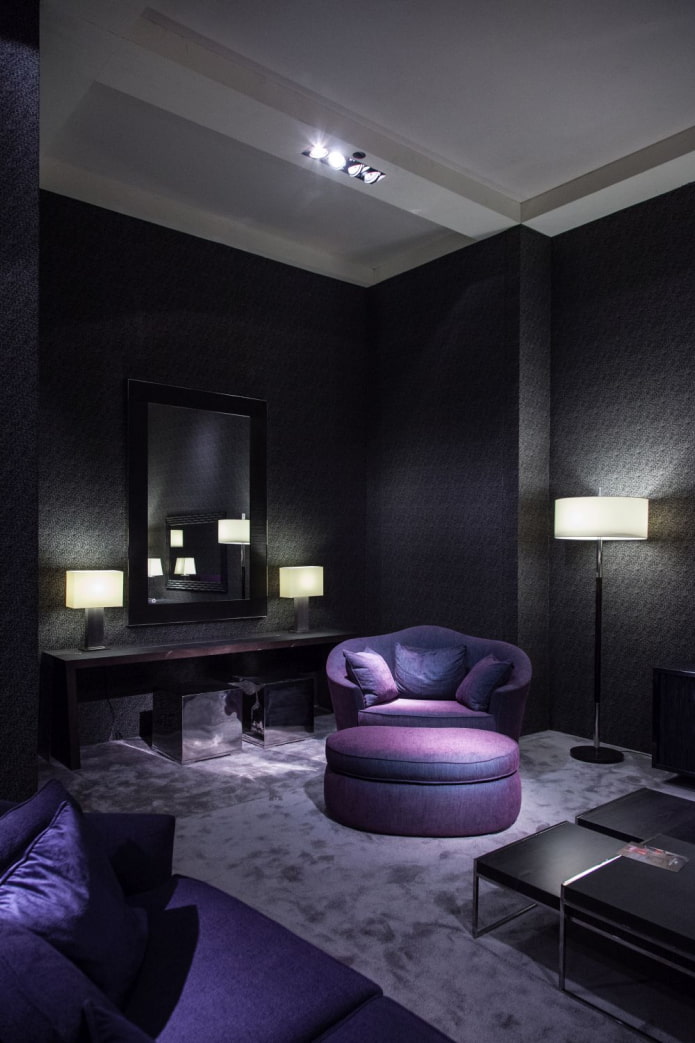
- Red + blue. If the combination with red looks vulgar, then blue softens the perception, balances this pair.
- Emerald. To make malachite sparkle beautifully against a dark background, choose luminous materials: gloss, velvet, glass.
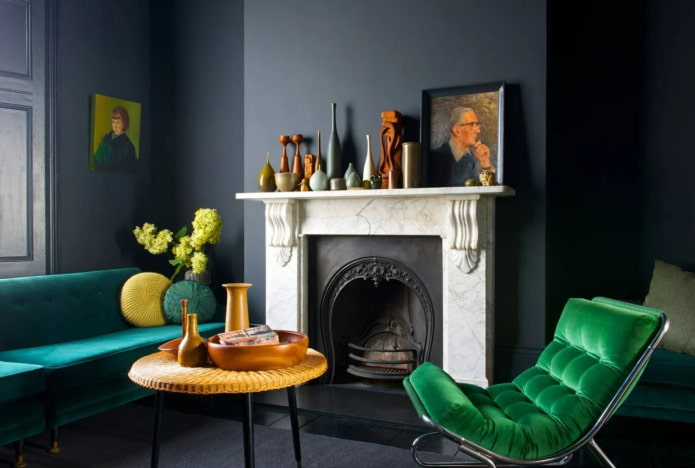
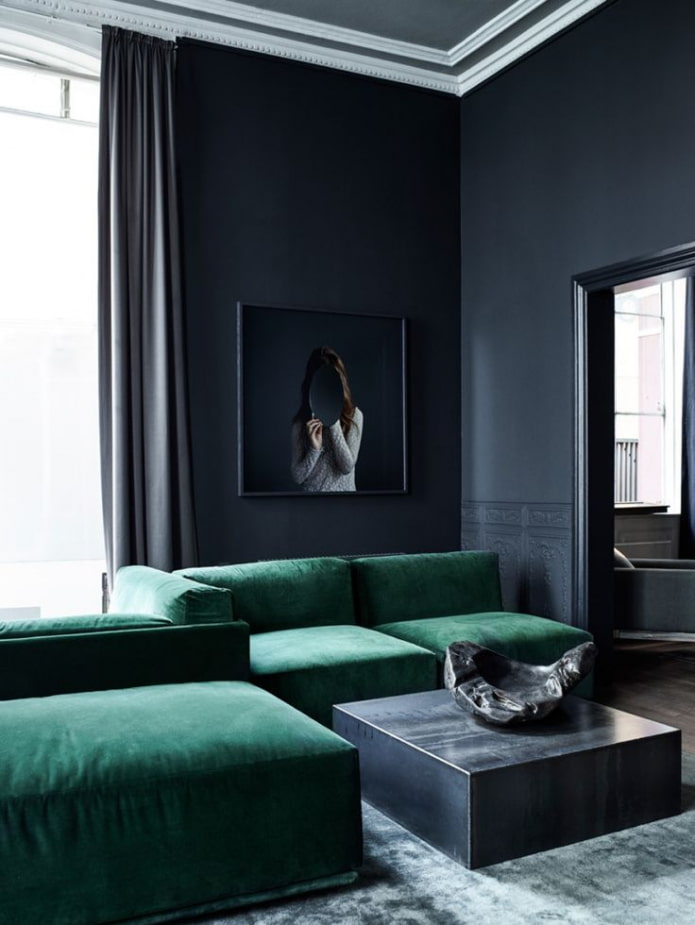
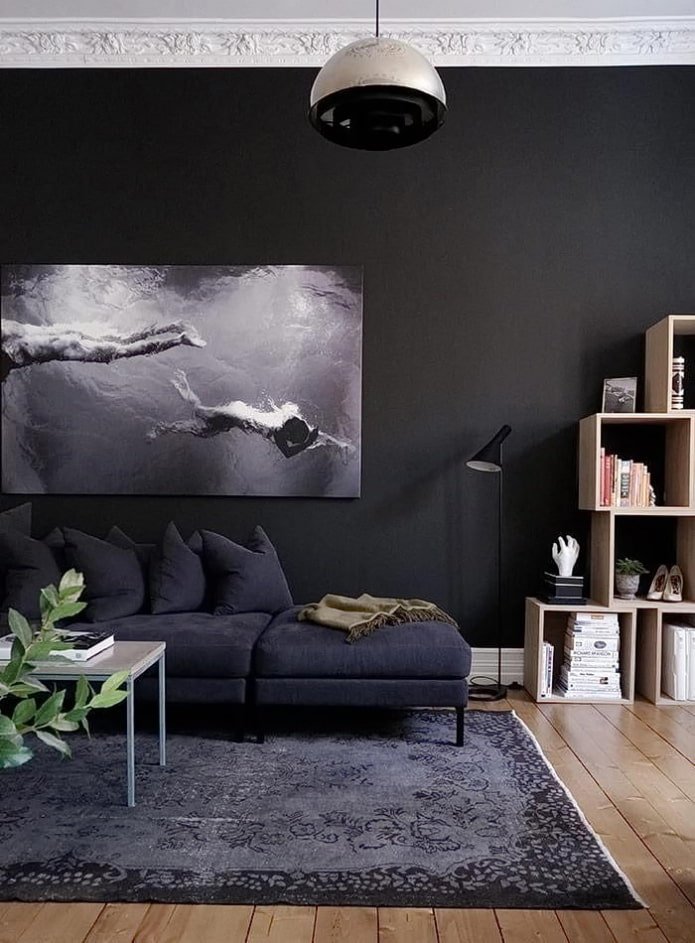
- White. Monochrome is always relevant. To make the contrast less bright, add intermediate gray.
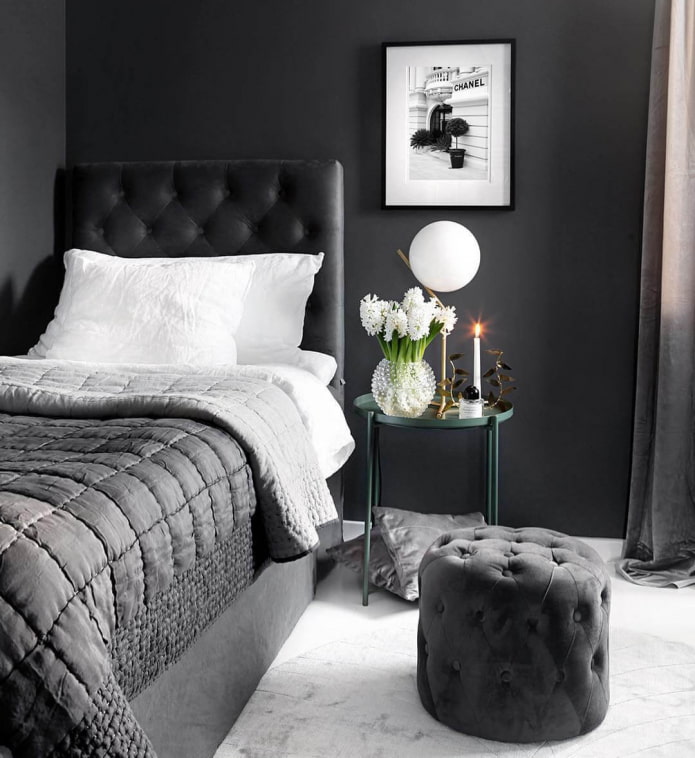
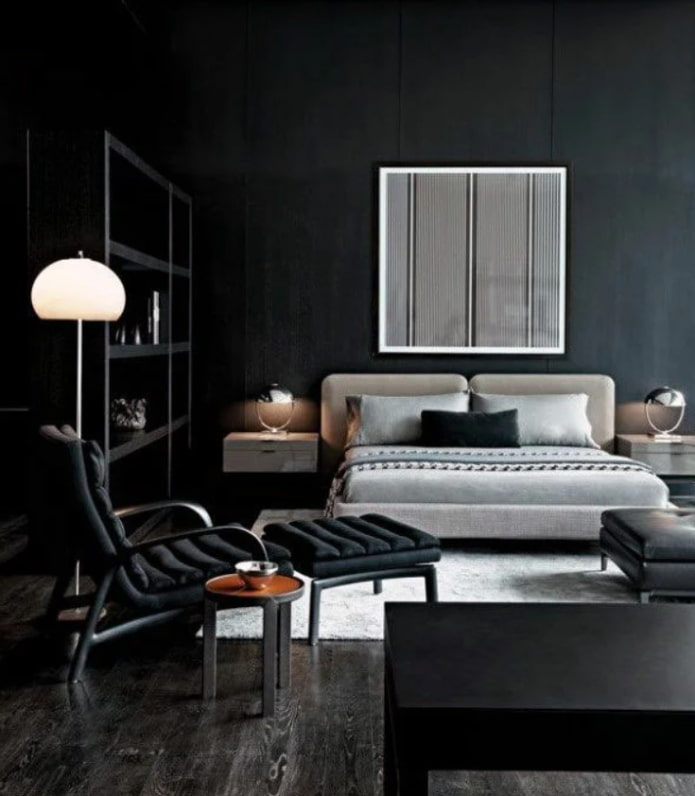
What styles is it appropriate for?
Black interior design, like the shade itself, is not limited to stylistic directions. It is appropriate in almost all modern variations, the only exceptions are Provence and boho.
- Scandinavian. The base should be left white, and the decor, furniture, and textiles should be dark. Combine with a warm texture of wood or wicker elements to maintain coziness.
- Loft. If there is a place for an interior with a dark ceiling or walls, then it is in industrial design. Matte paint can even be used to decorate brickwork.
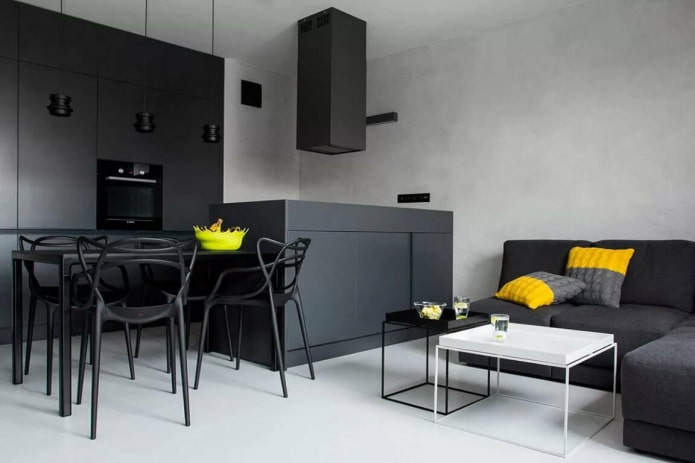
The photo shows a kitchen-living room in a minimalist style
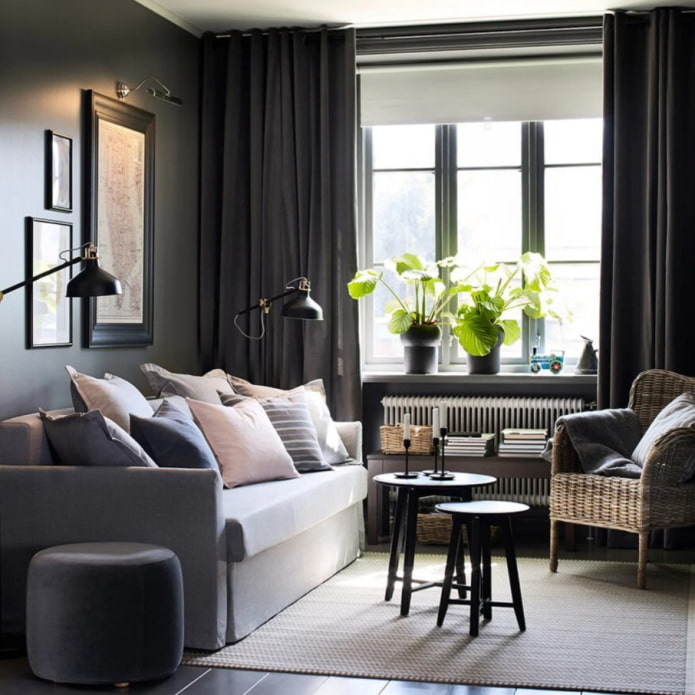
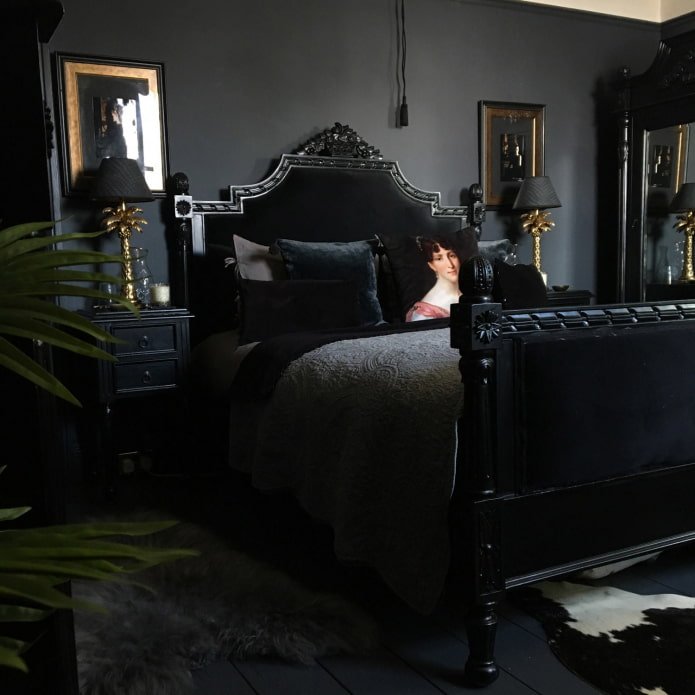
- High-tech. Matte textures are replaced by gloss, black in the interior is diluted with white by about half. Don’t forget about bright lighting.
- Classic. An unusual interpretation still looks restrained: choose furniture with carved facades, glue moldings on the walls, add gold details.
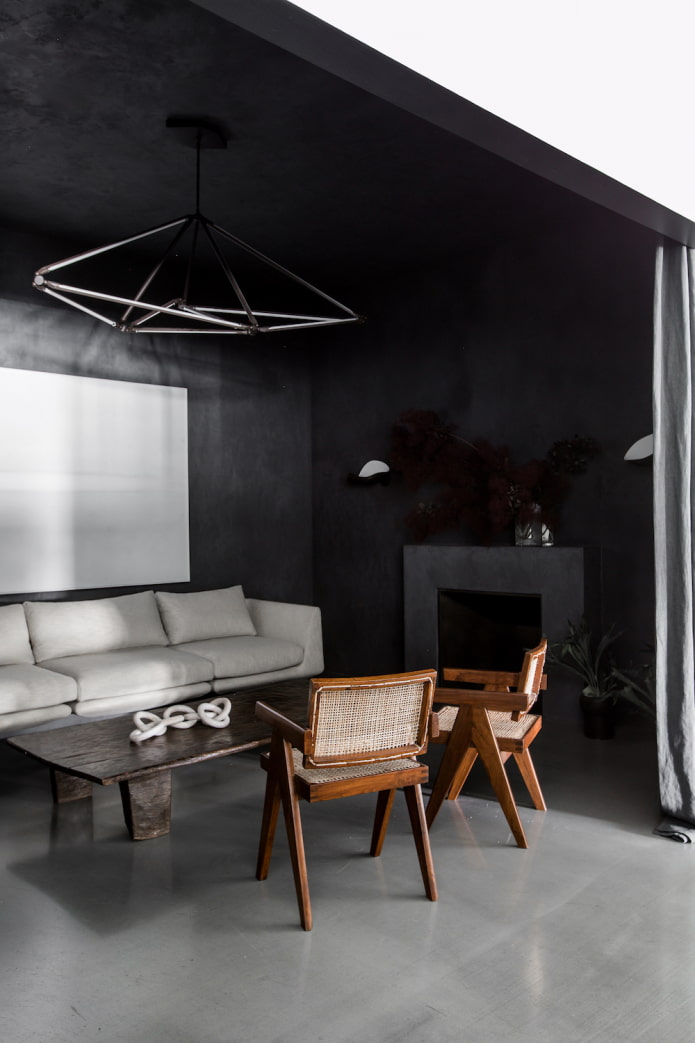
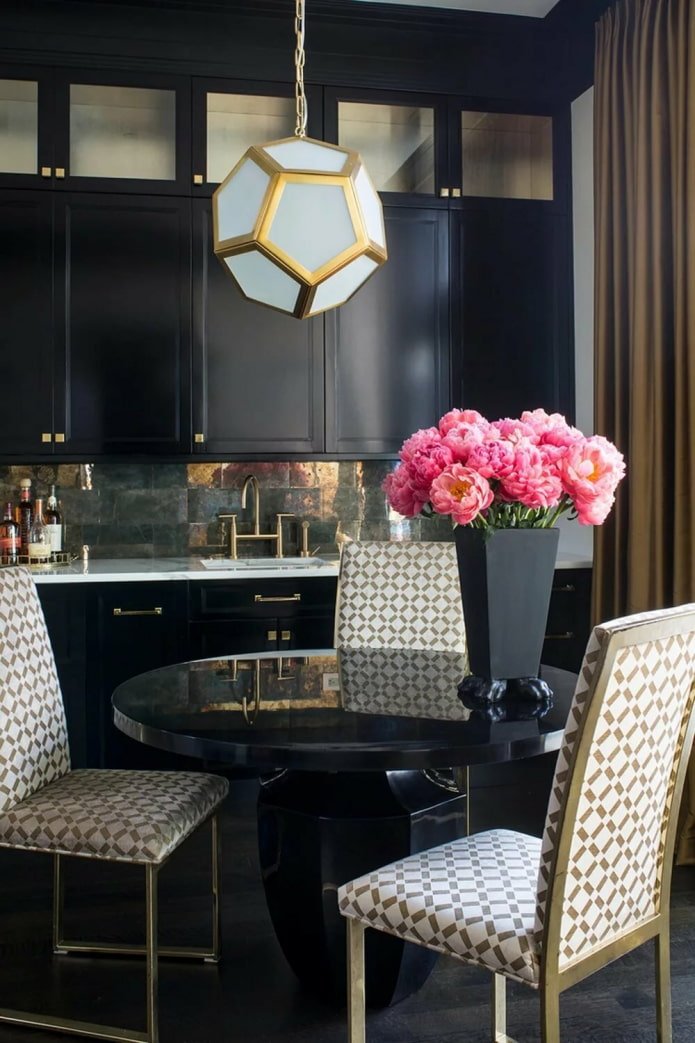
How does it look in the interior of the rooms?
- Kitchen. Allows the least amount of darkness, otherwise it will be uncomfortable to be in it. Handles on the facades, individual chairs, checkerboard tiles on the floor.
- Bathroom. It is acceptable to make a dark ceiling or floor, highlight one wall with glossy tiles. In combination with white sanitary ware you will get monochrome harmony.
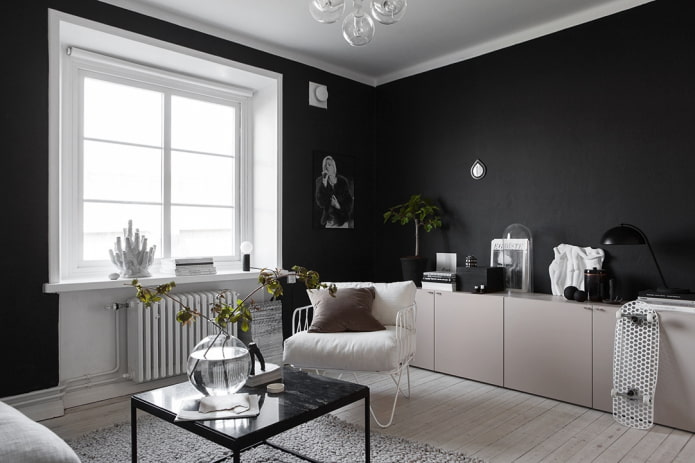
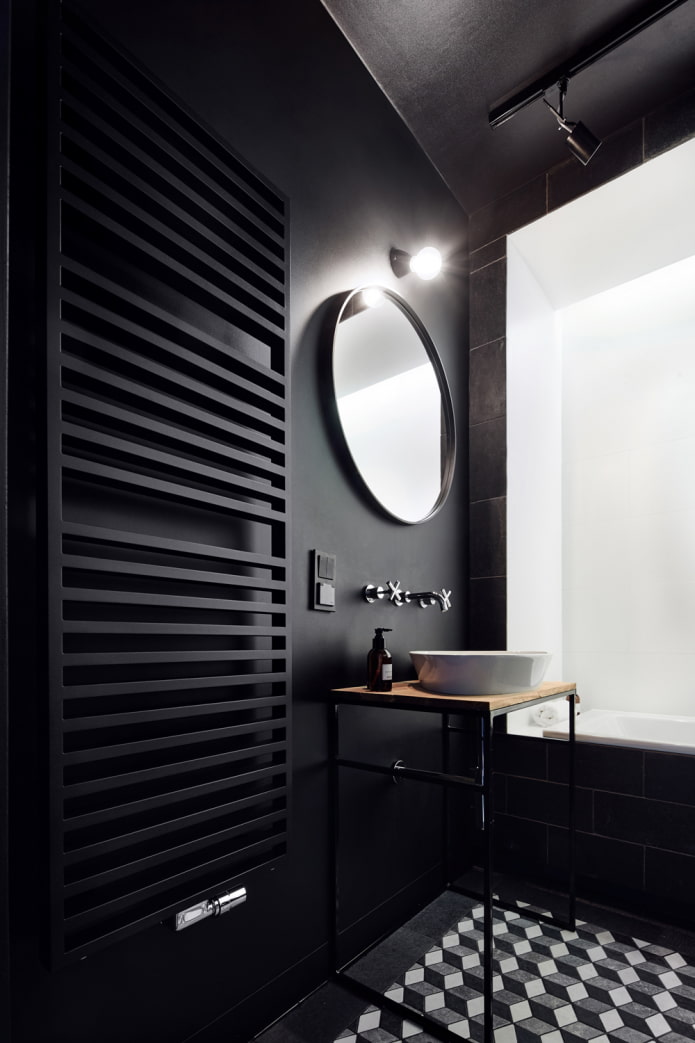
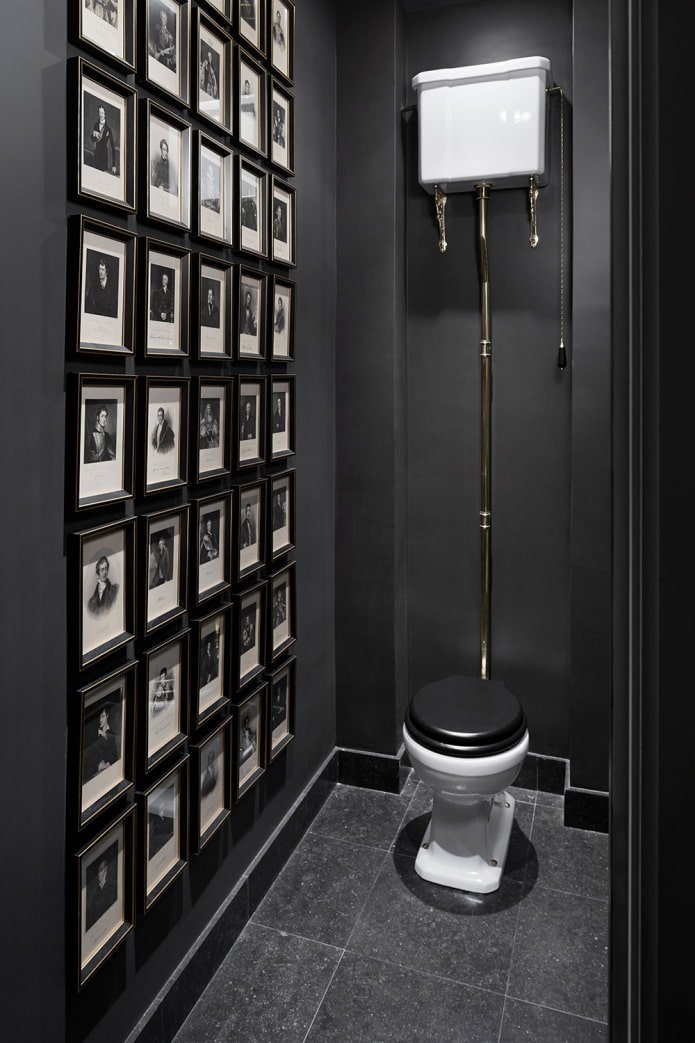
- Living room. It can be total black or use charcoal exclusively on accents and furniture. The decoration combines paint, stone, wallpaper, wood.
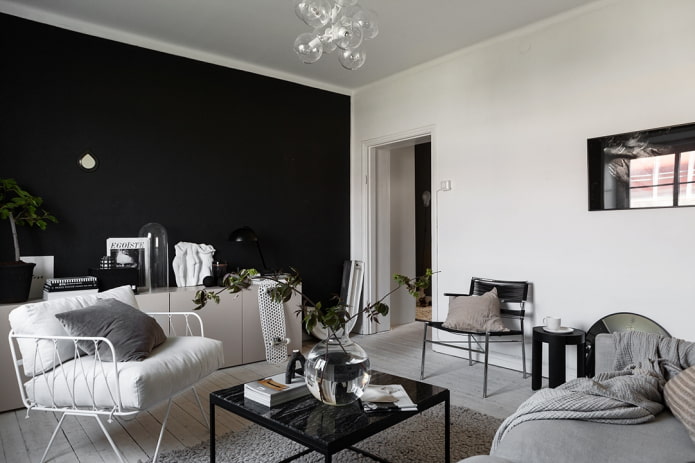
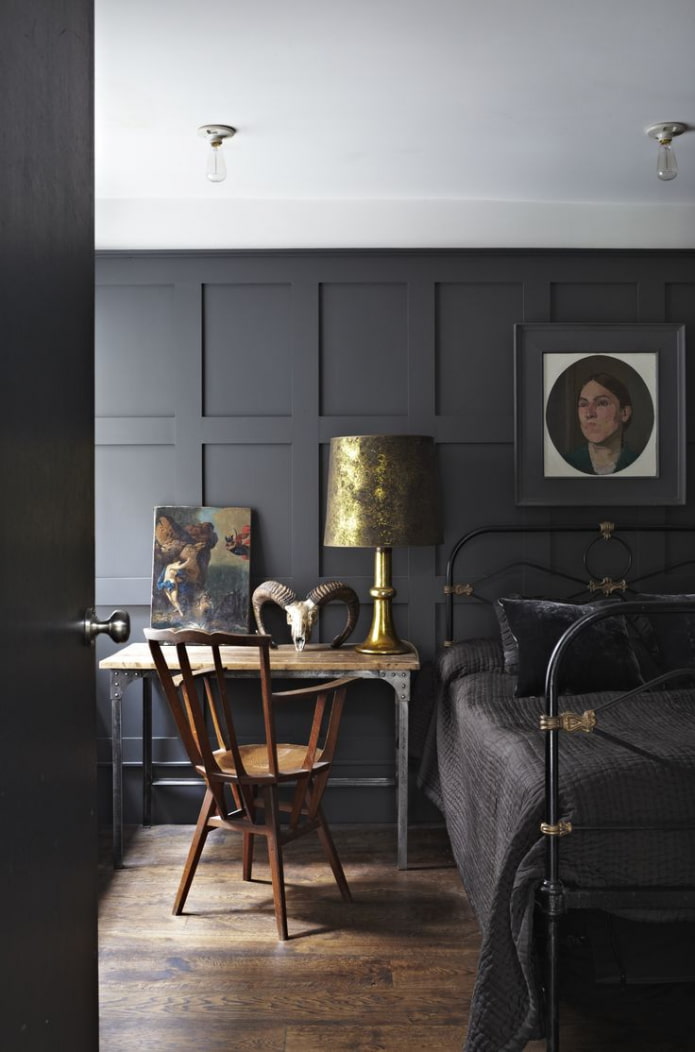
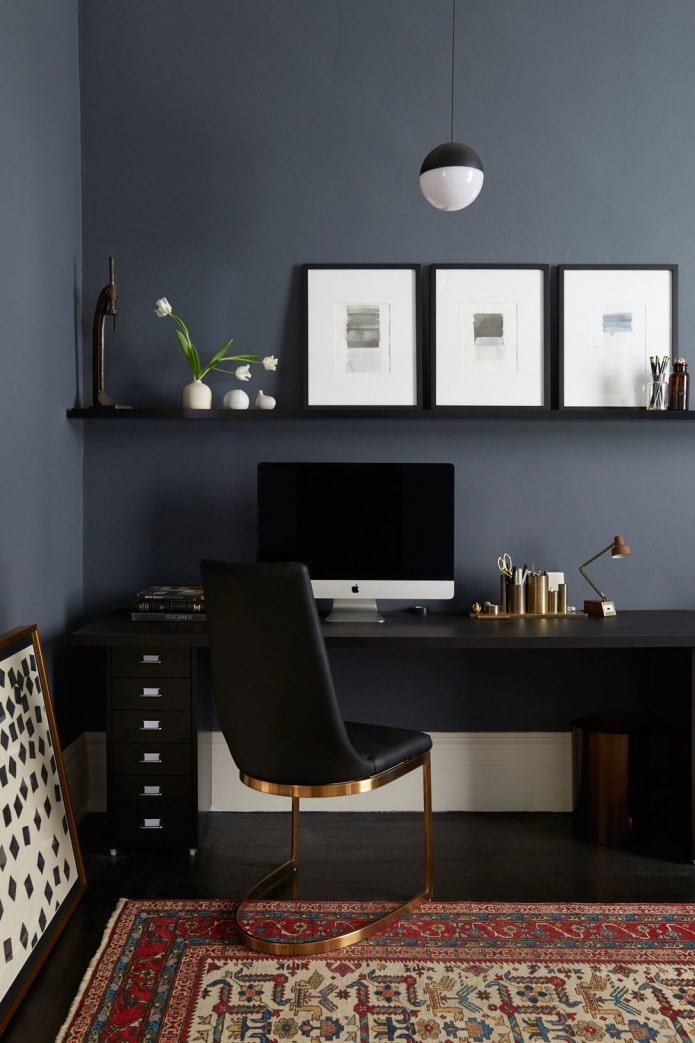
- Bedroom. A black interior is calming, but in large quantities the tone produces a depressing effect. To avoid this, dilute it with white, gray, beige.
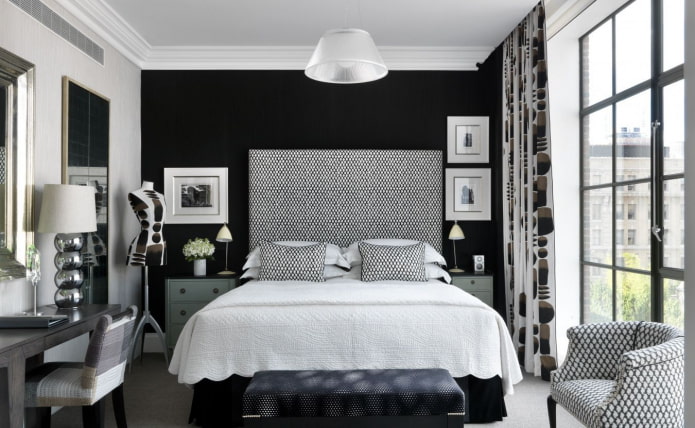
Now reading:
- Step-by-step guide to painting clapboard yourself: tips and nuances.
- Organizing a summer cottage space: images, diagrams and recommendations for zoning.
- Your Ultimate Guide to Buying a Used Opel Signum
- 70+ photos of office design in the interior of an apartment and house
- Ultimate Guide to Buying a Used Nissan GT-R